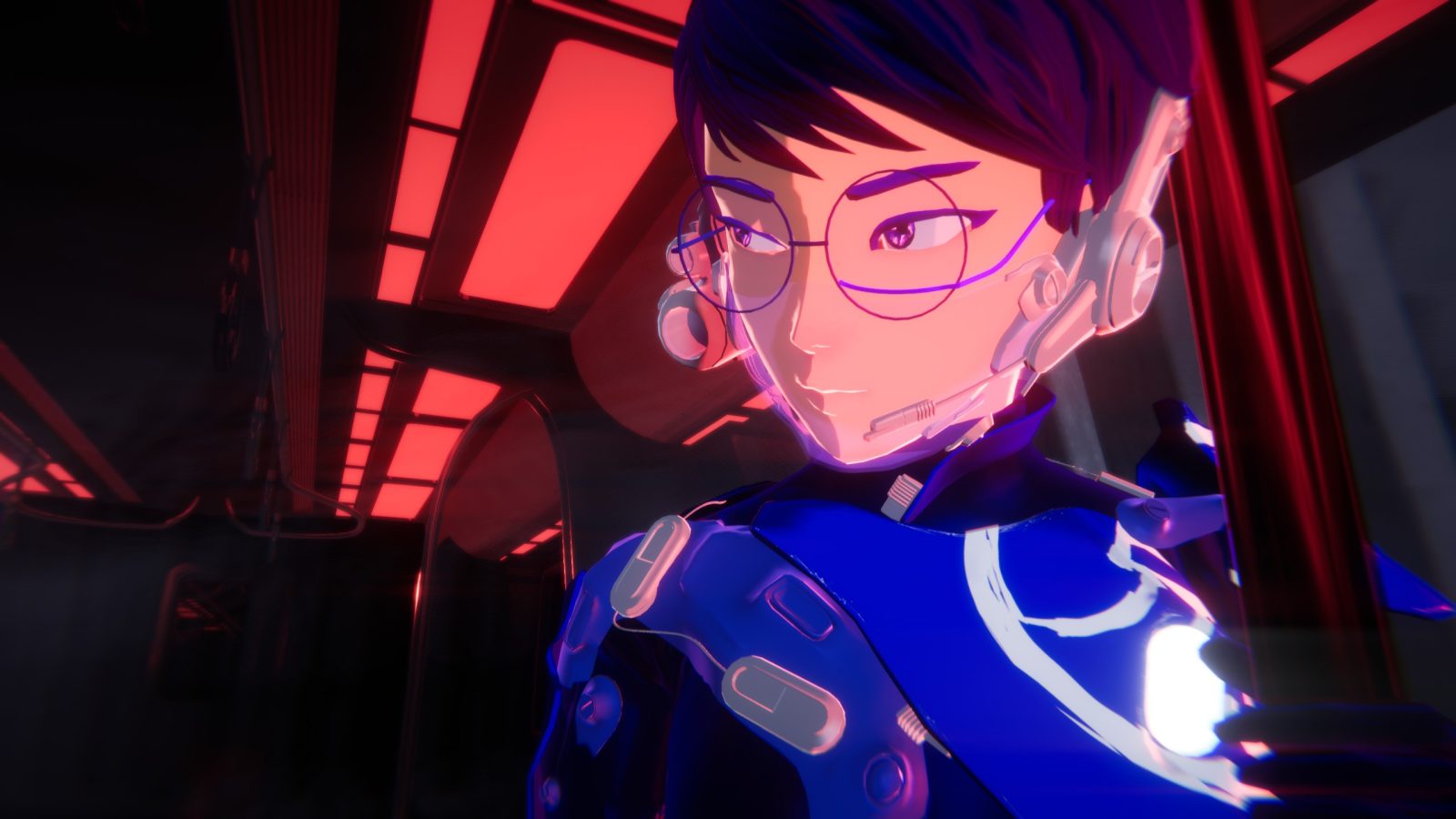A common argument amongst gamers is that remakes are unnecessary cash grabs, a way to coerce players into purchasing a perfectly playable game multiple times for slightly better graphics or gameplay tweaks. While there may be some merit to this argument at times, normally I stay out of the conversation. Whether or not a remake is necessary is inconsequential to me, as I either purchase the game or I don’t, but I certainly don’t let its existence ruin my day. That said, there is one game that players have been universally begging to be remade for years – Resident Evil 4. A classic since its initial release in 2005 on the Gamecube, RE4 has now been thrust into the modern age in what is sure to floor both old fans and newcomers alike and creates an entirely new way to experience Leon’s adventure, even for those who have completed the original multiple times.
This is not simply a graphical overhaul, it is almost an entirely new game which still retains all the core aspects of the original while brilliantly expanding upon it to create a more fleshed out story, more interesting characters, and a better flow between sections while also removing the parts of the original that have begun to show their age – i.e. quick time events, a cumbersome method of equipping weapons, some cringey dialogue, etc. – to create what will almost certainly become the epitome of how to remake a game. Sure, the original release of RE4 still looks surprisingly good and some may still scoff at yet another release of this title, but this remake is such a definitive version of the game that I’ll be hard pressed to ever pick up any of the previous releases again.
Before we go any further, let me just say that if you’re just here to know whether the remake is worth playing, then the short answer is yes – rush out now and purchase the game, avoid spoilers about the updates, and prepare to have a blast. If you’d like to know more, in a review that will mostly stick to speaking about a few quality-of-life additions while avoiding story spoilers, then read on.
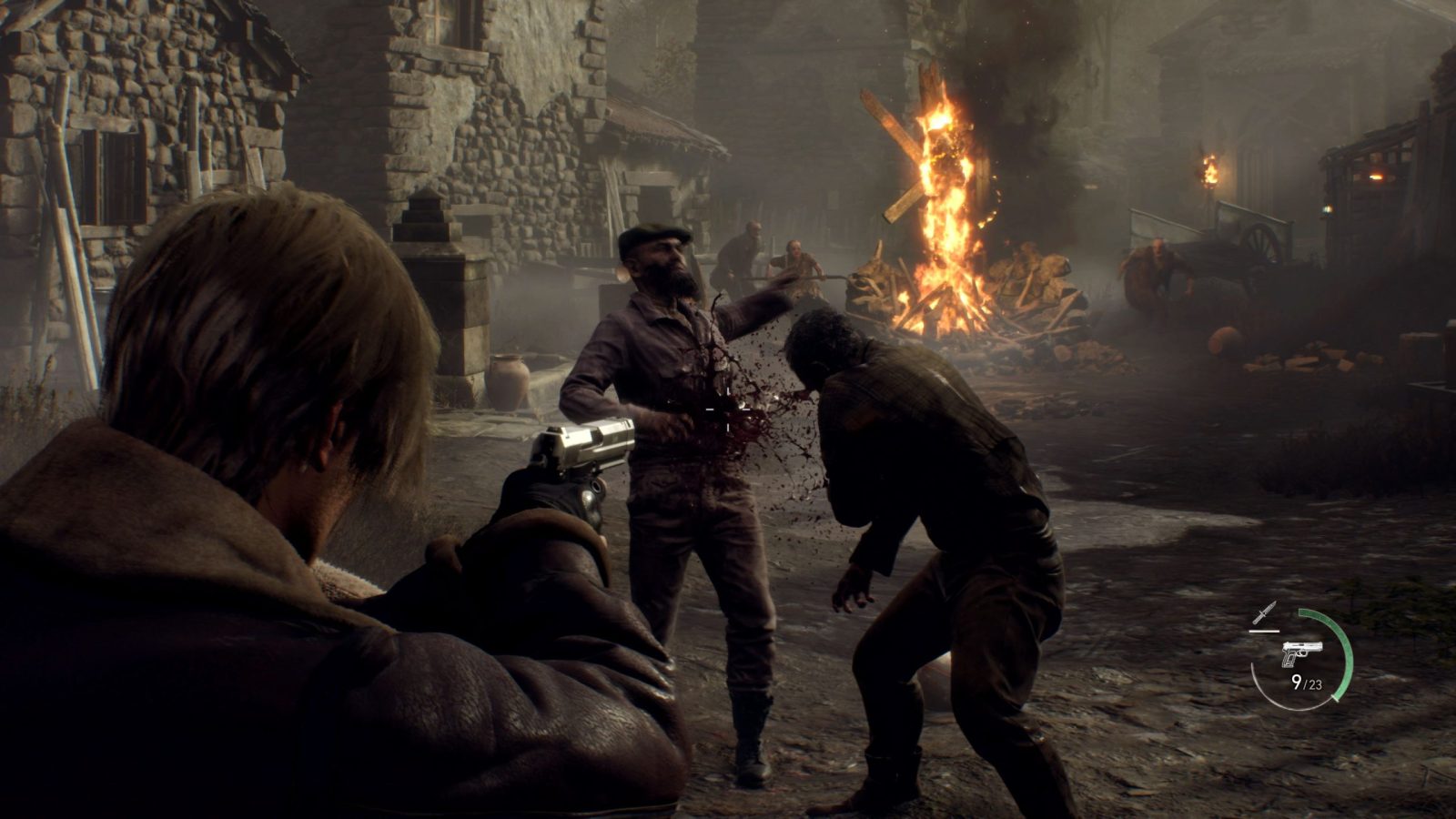
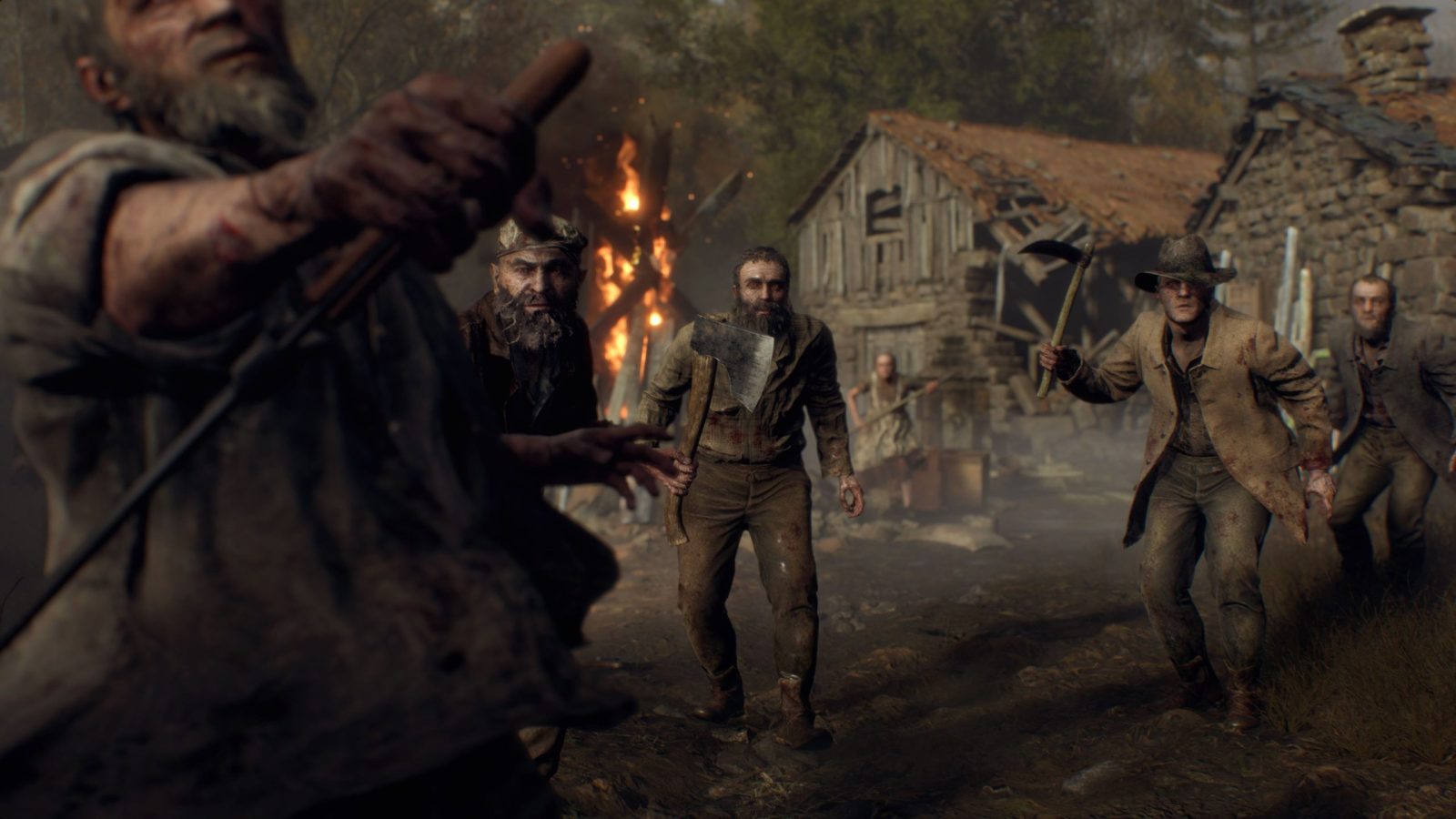
One fear with remakes is that a person’s nostalgia may be at odds with any changes a remake implements but Resident Evil 4 has been a part of gaming culture for 18 years now and the developers are well aware of the feelings many of its iconic set pieces invokes. They have managed to keep the core story and gameplay relatively intact, but, through incredible graphical and gameplay overhauls, have allowed the entire experience to once again feel fresh. From your first steps into the woods, to your first encounter with the townspeople, to your first time walking the halls of the castle, RE4 perfectly toes the line between feeling familiar and like a brand new adventure.
For those unfamiliar with the story, it revolves around Leon, a survivor of the Raccoon City outbreak due to the Umbrella Corporation six years prior on his first day as a cop – the events of Resident Evil 2 – and his attempt to rescue the President’s daughter, Ashley, who has been abducted and is being held in a remote part of Europe. Upon Leon’s arrival the situation quickly escalates, as Leon realizes that the entire town has been corrupted by an evil force and he is met with an incredible amount of hostility from all the citizens. Despite this, he continues on his mission, hoping to find Ashley and get out of the town alive. While there’s more to the story, I’ll leave that for the player to discover during their playthrough.
The first thing you’ll notice is the incredible graphical overhaul the game has received. The entire game has been remade from the ground up with the scenery, buildings, enemies – well, basically everything – just looking fantastic. Locations you’ve traversed a hundred times in the past feel new, while still being recognizable and boasting a new paint job that makes them more foreboding yet with a sense of actually having been lived in. New areas and scenes created for this game fit in perfectly, with only those who know the game in and out being able to even catch what wasn’t in the original release.
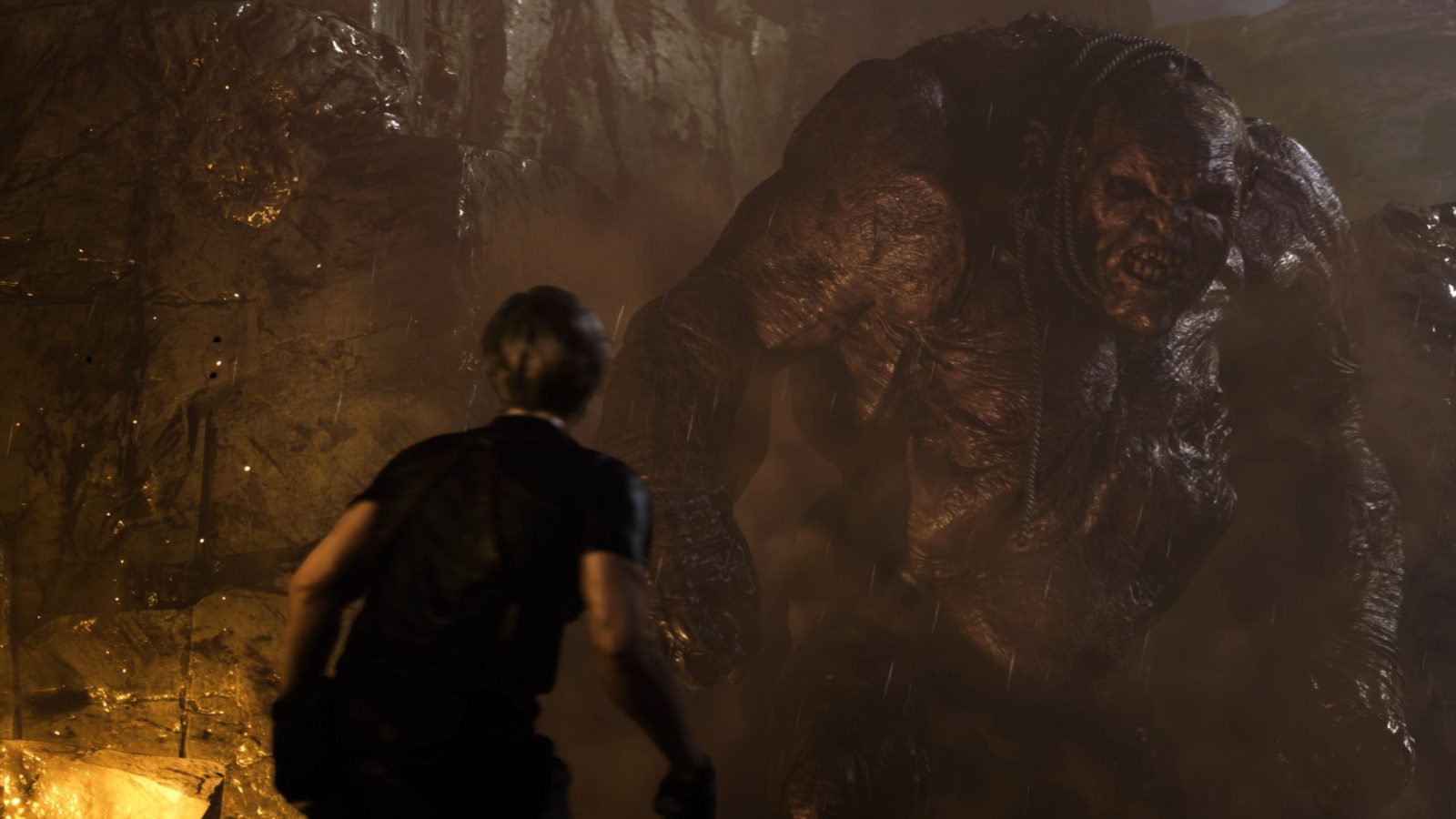
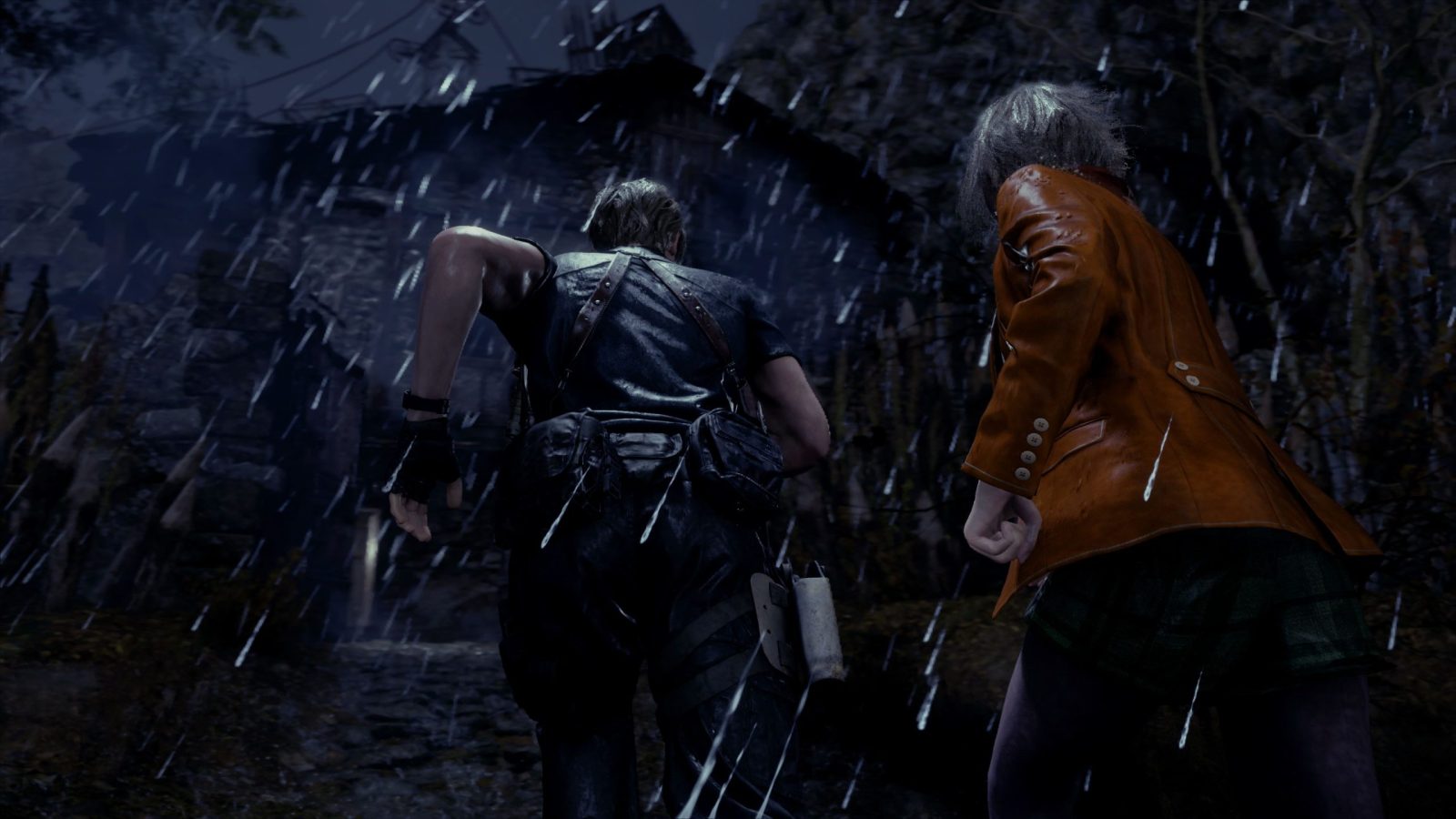
Yes, I said new areas and scenes. Quite a few new set pieces are included, and many areas have been expanded or altered in some way to better the flow of the entire game and to compliment the updated dialogue and more fleshed out story. Despite these additions and changes, the heart of the original remains intact, but has been updated to more modern standards of storytelling. New dialogue has been added, story points occur slightly differently, and some of the more stilted or corny lines from the original have been changed – although the game still allows itself to lean into the corniness at times, retaining the playful feel of the original despite the world feeling much more threatening this time around. And yes, Leon still can be counted on to do unnecessarily dramatic flips and window dives occasionally. I particularly enjoyed the updated banter between Leon and Ashley, which allows us to watch as their adventure begins to create a bond between the two. My favorite exchange between them involves a particular chandelier jumping section. Also of note is that some of the more cringe dialogue, specifically Luis’s statement when he first meets Ashley, has been removed.
While the original release had its scary moments, the game always felt like more of an action game interspersed with moments of tension to me. This new iteration ramps up the horror significantly, thanks to slight changes in enemies and their design and the overall darker look of the world, feeling grimier and more dangerous to explore. The game has always been difficult due to the sheer amount of enemies you encounter at times, but now that is expounded by the better AI and alterations to enemies this time around. Enemies in the original attacked predictably and could easily be dodged and then taken down if timed right, while this time they run at you, lunge, swing wildly, etc. You’ll quickly discover that you may not be able to rely on the methods you used in the original to survive this go around.
For instance, one of the common methods of survival in the original release was using the knife to attack an enemy’s head or shooting them once in the knee to disorient them and then kicking them to the ground, where you then proceeded to stab them repeatedly to conserve ammo. While this is viable at times still, your knife now has a set durability, which once reached will force you to go without until you repair the weapon during your next visit to the merchant. That’s not to say the knife is less useful this time around, if anything, it is far more powerful, and the durability was added in to balance this out. The knife can be upgraded, can be used for instant kills when sneaking up on enemies, to escape when grabbed, and on downed enemies to immediately take them out before they transform into a tougher version. You also have two methods of attack with the knife now, a forward stabbing motion and a wide sweeping attack. While the durability is initially frustrating, you will eventually learn to use the knife tactfully rather than as a crutch to avoid using ammo. Helping matters is the fact that you no longer need to use the knife or even ammo to break open crates and barrels, as Leon will simply hit them with the butt of his gun or stomp them. This is just one of the many small, but welcome, tweaks to gameplay.
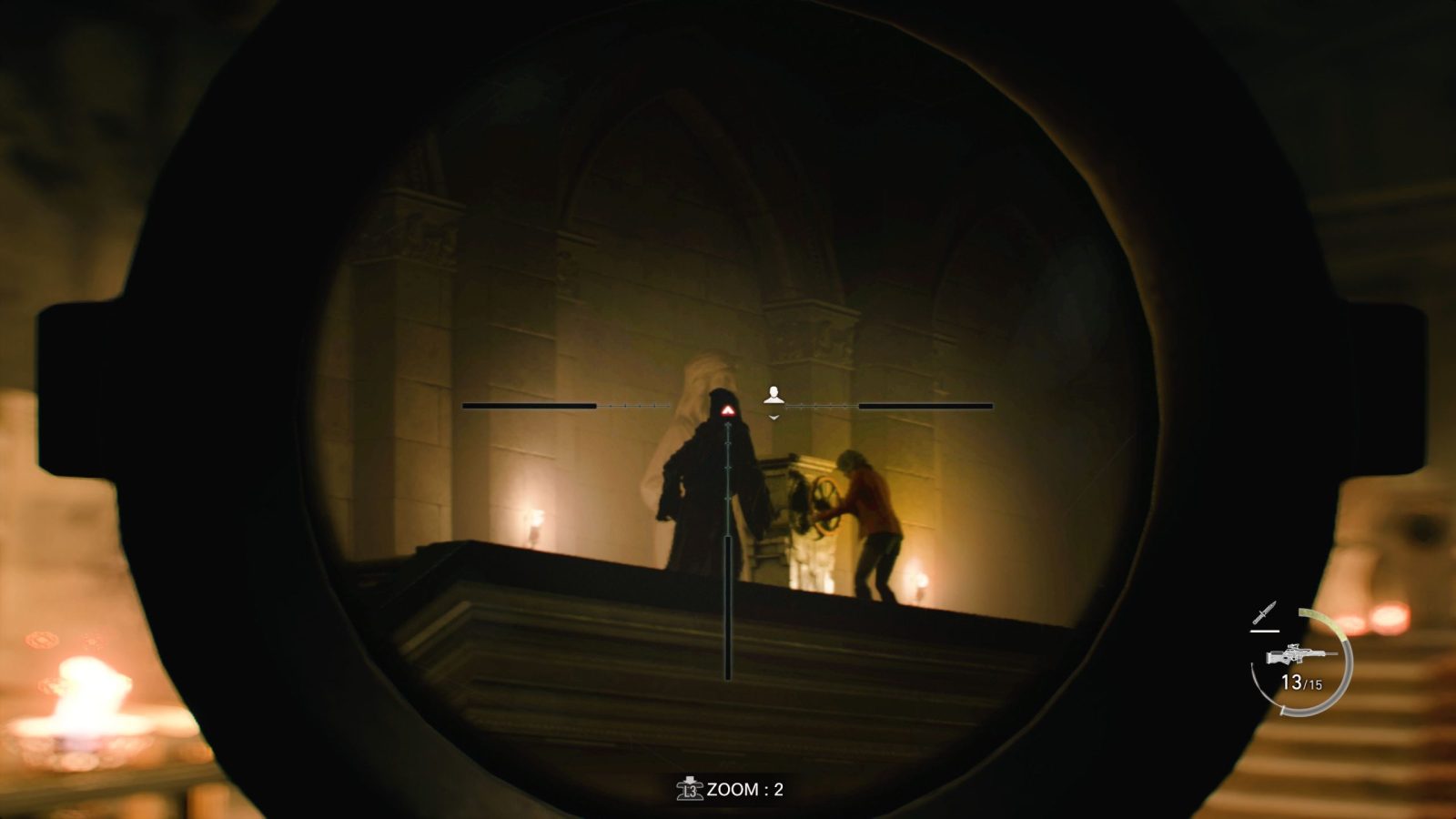
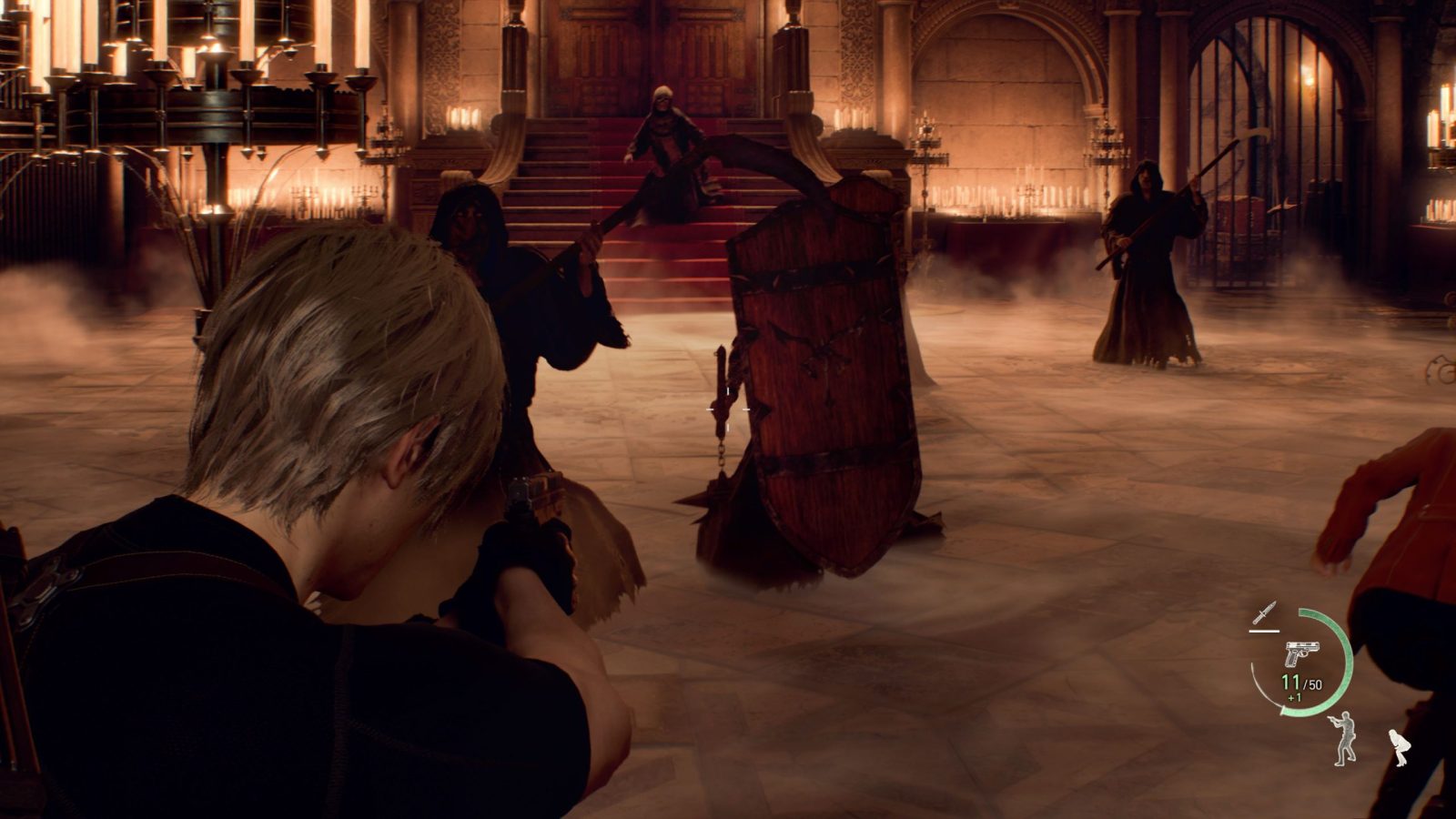
In fact, there are so many quality-of-life improvements, including the ability to craft, the addition of side missions, and the inclusion of charms, that it’s hard to know where to start, especially when I am desperately attempting to not spoil any of the changes or give away any real information about the new additions while also providing an informative review.
Ammo is found far more than in previous Resident Evil games, but you’ll still run low after a few of the more epic encounters, so this time around Leon has the ability to craft. While I won’t dive into the intricacies of crafting, you are able to use various resources found throughout the campaign or purchased from the merchant to craft a wide range of ammo and items. Typically crafting involves using both gunpowder and a resource pouch, of which there are two types, with each resource pouch being used to create specific ammo and items. Additionally, you can purchase crafting recipes from the merchant, which unlock slowly as you progress through the chapters, to further increase your crafting abilities. Crafting is a welcome addition, allowing players to focus on the ammo and items that they use most frequently to ensure they always have a stockpile, rather than hoping they’ll find what you need in one of the many breakable crates or barrels.
Speaking of the merchant, he is just as iconic as ever, though perhaps a bit too talkative while you are attempting to navigate his wares. It’s still hilarious to struggle through a particularly brutal section only to stumble upon the merchant just chilling in his makeshift shop right after, leaving you to wonder how he gets around so easily and why he isn’t telling Leon his secrets. With each chapter he adds new crafting recipes, weapons, and items to purchase. More importantly though, he will regularly hold sales which will last throughout an entire chapter, often featuring an expensive item at a steep discount and sometimes he will even toss in a free item with purchase, such as a crafting recipe. He will still buy anything you want to sell, including paying you nearly the exact amount you’ve put in updating a weapon if you decide to sell it, and he still will tune up your items to increase their damage, ammunition capacity, reload speed, and more. New this time around is his ability to trade with you to obtain items which are otherwise unavailable to purchase.

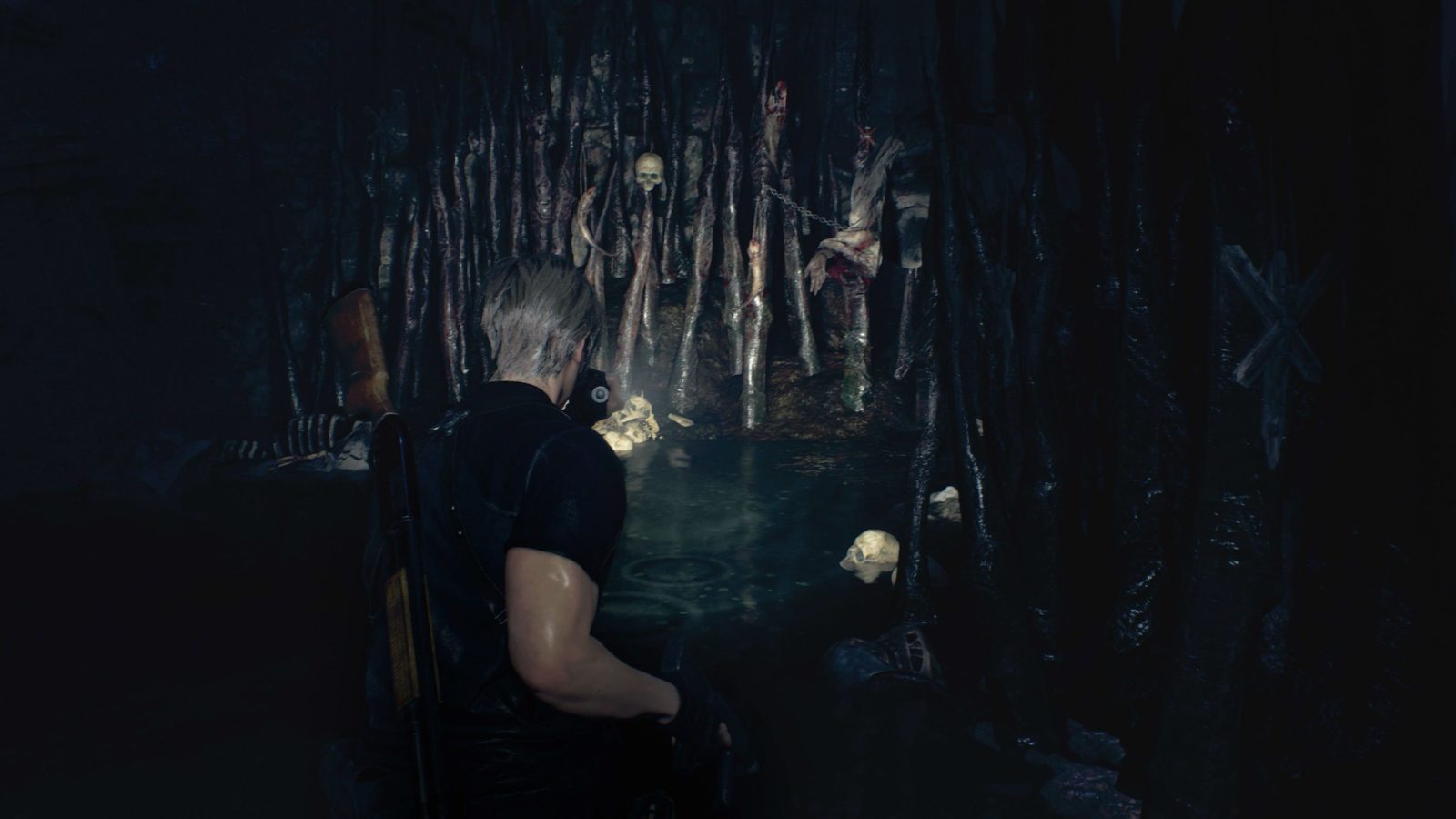
To trade, you must collect spinels, normally through side missions which you find in the form of blue request notes pinned to walls. You can then trade those spinels for exclusive items and weapons. I thoroughly enjoyed this new addition since it provided me with more incentive to explore, but I can see how some may be frustrated that a few weapons and items are locked away behind this mechanism. Still, those who thoroughly explore will more than likely complete many side missions by accident and there are still a few spinels to be found in the wild, although they are nowhere near as prominent as in the original release.
Another new addition is charms, which are items that can be equipped to your attache case to grant a wide range of perks. Charms are random and must be earned, though how to earn them I will leave for the player to discover. Up to three charms can be equipped to your attache case at once and are neat to look at, as they resemble keychains which dangle off your case. While none of the charms that I encountered were strong enough to really turn the tide of the game, they did all provide me with boosts in multiple areas which I appreciated.
The most notable gameplay change, for me, is the gun and item shortcut menu. No longer do you need to constantly bounce back and forth between gameplay and your attache case to switch weapons or to grab throwable items. You can now simply register them to one of the eight available slots immediately accessible through the D-pad. You’re still welcome to bring up your attache case whenever to equip weapons or to organize but being able to swap important items on the fly helps the flow of the game immensely, avoiding that immersion breaking process that plagued the original release. Coupled with the responsive controls and satisfying gunplay, these updates help to make the game feel modern and much more responsive to your actions, alleviating a bit of the frustration present in the original release.
Other features of the PS5, such as the dual sense controller’s abilities, have been put to good use here, with the speaker providing a satisfying click as you load weapons, along with providing the audio for radio communications and in a few other parts which I won’t spoil here. The touchpad opens up the detailed map, which allows you to toggle between floors and is incredibly helpful for finding treasure or just avoiding getting lost in the sometimes overwhelming areas you’ll explore, while the R2 trigger feels great when shooting, providing some tension when you squeeze off a shot. The only issue I had with the adaptive trigger was when swiping quickly with the knife during a few fights, as the tension seemed to fight back against me and made it a bit more difficult than it needed to be. Still, it’s minor and could very well have been in my head as it was just unexpected and did not seem to actually affect gameplay.
This remake is still just as long as the original, most likely taking players 15 to 20 hours to complete on a first run through depending on how much they explore or how many side missions they tackle. The Resident Evil series has always been known for its replayability, and RE4 is no different. Between challenges and a New Game+ mode, there are a slew of reasons to hop back in after completing the campaign. Completing challenges earns you credits which can then be spent unlocking new weapons, apparel, character models, and concept art. These challenges are quite varied and range from items you’ll naturally complete during your playthroughs to items only the most determined players will complete.
There are still a few outdated aspects of the game, such as the enemies all looking a bit too alike, although this is far less pronounced than it was on the original release where you’d often encounter multiples of the same looking enemy at a time. Additionally, enemies still have an unlimited amount of dynamite sticks and axes shoved down their pants, leading to a few frustrating moments when you are being continuously belted with projectiles while attempting to clear out a swarm of enemies. Also, I hate bear traps. There are so many bear traps, at least in the initial hours of the campaign, that it was laughable how much time I wasted prying myself out of them – which I know, is on me for not paying enough attention to my surroundings, but still, it does become frustrating. But these are minor, almost petty grievances, when compared to how incredible RE4 is in all other aspects.

Resident Evil 4 was a 10/10 game when it was released and remains so to this day. Despite the years since its initial release, Leon’s adventure has held up incredibly well thanks to a combination of fantastic gameplay, a fun story, campy characters, varied environments, and a lengthy campaign. Now with a new facelift which modernizes the gameplay while providing an incredible graphical update, adding thrilling new set pieces, and expanding the story, RE4 easily retains its spot amongst the best games ever.
PROS
- Incredible graphical update
- Expands on the original with thrilling new set pieces and an expanded story
- Removal of quick-time events and other outdated aspects of the original
CONS
- The swarms of enemies begin to look too much alike after a while
- Where are they hiding all those axes and dynamite in their pants?
Richard Allen is a freelance writer and contributing editor for various publications. When not writing for Gaming Trend you can find him covering theatre for Broadway World, movies and TV for Fandomize, or working on original stories. An avid retro gamer, he is overly obsessed with Dragon's Lair. Chat with him via @thricetheartist on Twitter and @richardallenwrites on Facebook and Instagram.
See below for our list of partners and affiliates:

 1 year ago
113
1 year ago
113

